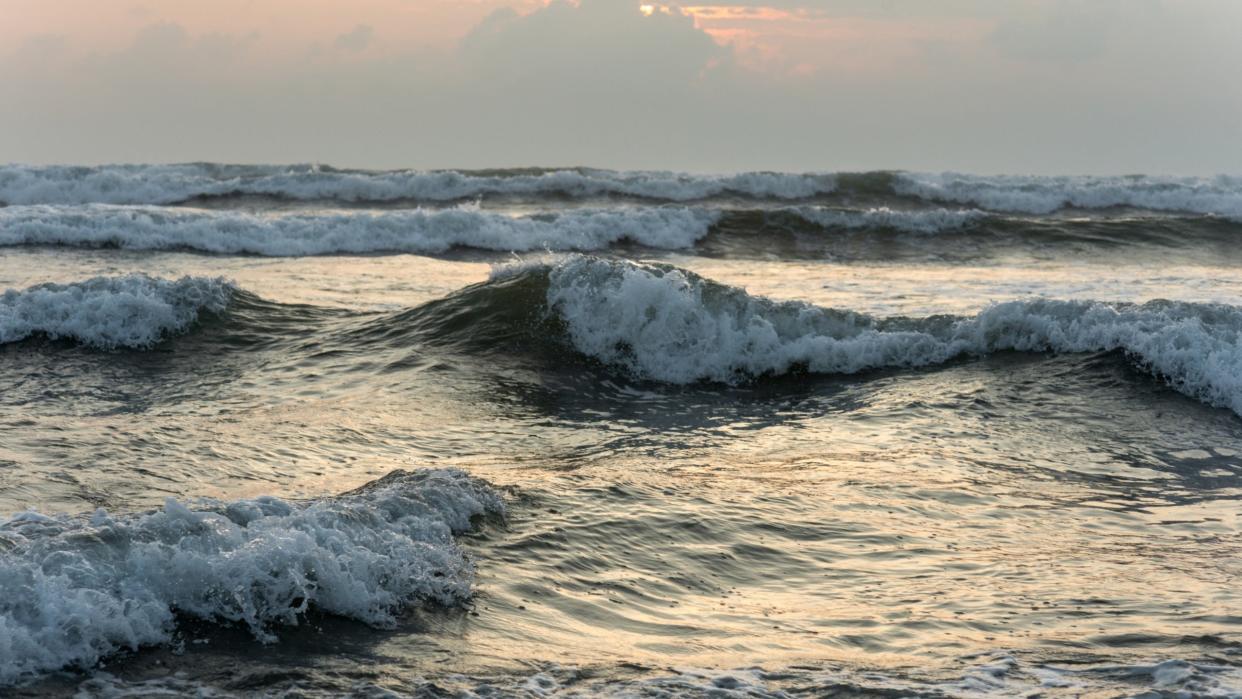How climate change is pushing oxygen out of the world's oceans

Since the 1960s, the oxygen level in the world's oceans has dropped by about 2 percent. While that may not sound like a lot, the continuous decline in oxygen content of oceanic and coastal waters, called deoxygenation, can alter marine ecosystems and biodiversity. This is largely happening due to global warming and nutrient runoff.
Greenhouse gas (GHG) emissions from anthropogenic activities like deforestation and fossil fuel use trap the sun's heat, warming the planet and heating up the ocean. Oxygen becomes less soluble at higher temperatures, which means warm water holds less oxygen than cold water. Eutrophication due to excess inputs of nutrients like nitrogen and phosphorus from agriculture or wastewater also stimulates algal blooms, resulting in oxygen depletion when they decompose.
[Related: Scientists say the ocean is changing color—and it’s probably our fault.]
Deoxygenation affects living resources and disrupts natural biogeochemical processes, says Nancy Rabalais, professor and chair in oceanography and wetland studies at Louisiana State University who researches coastal eutrophication and hypoxic environments. Oxygen concentrations play a role in the rates of breakdown of organic matter and the cycling of different elements in the environment. For instance, deoxygenation may enhance phosphorus recycling, reduce nitrogen losses, and initially enhance the availability of iron, all of which can alter the productivity of coastal and ocean ecosystems.
Loss of oxygen content also has significant impacts on marine microbes and animals. Deoxygenation can alter their abundance and diversity, reduce the quality and quantity of suitable habitats for them, and interfere with reproduction. The oxygen decline doesn’t have to be major to potentially cause ecosystem-wide changes. In oxygen minimum zones that may already be close to physiological thresholds, even small oxygen declines can have drastic impacts.
When oceans lose oxygen, marine organisms become stressed and need to adapt—if they can—to survive. Species that are especially sensitive to oxygenation changes, like tuna and sharks, are being driven to shallower habitats as oxygen-deficient zones expand, says Anya Hess, PhD candidate at Rutgers University who studies ocean oxygenation. Deoxygenation also threatens the ocean's food provisioning ecosystem services for humans, potentially leading to reduced catches for fisheries and the collapse of regional stocks.
Although new research suggests deoxygenation may eventually reverse, it might not happen until the far future. In a recent study published in Nature, Hess and her co-authors looked to the Miocene warm period about 16 to 14 million years ago when temperatures and atmospheric carbon dioxide concentrations were higher than today to study a “possible example of how oceans behave during sustained warm periods,” she says.
Their results show that the eastern tropical Pacific—a major oxygen-deficient or “dead” zone that has been losing oxygen as the climate warms—was well oxygenated at that time, which suggests that deoxygenation could reverse on long timeframes as the climate continues to warm.
[Related: A deep sea mining zone in the remote Pacific is also a goldmine of unique species.]
Climate models from a 2018 study published in Global Biogeochemical Cycles predict oxygen concentration may start increasing and oxygen-starved regions in the ocean can begin shrinking by 2150 through 2300 due to decreasing tropical export production—the nutrient supply from the ocean interior—combined with increased ocean ventilation or the transport of surface waters into the interior. But marine ecosystems are already facing various impacts today—and rebounding is hard because deoxygenation can reconfigure food webs and organisms that can't avoid low oxygen levels can become lethargic or die.
“I don’t think we should wait around to see whether deoxygenation will reverse as the climate continues to warm,” says Hess. “We know that rising temperatures are causing ocean deoxygenation, so if we want to stop it we know what we need to do—reduce greenhouse gas emissions.”
Policymakers can also establish long-term monitoring programs around the world to study oxygen measurements, which will help identify patterns and predict biological responses. All in all, deoxygenation trends may eventually reverse in the future, but taking the steps to mitigate climate change and control nutrient runoff will benefit humans and marine ecosystems today.

